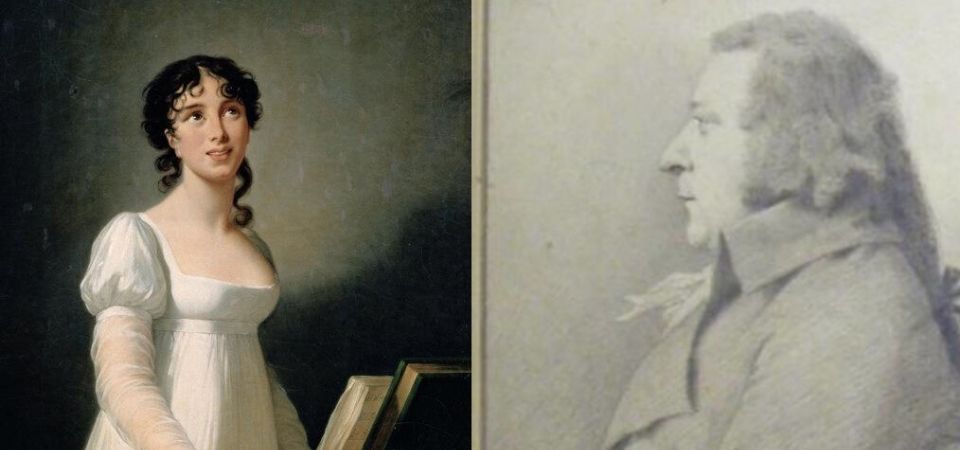- 3 juin 2020
- La scène parisienne
- Sam Asher
Blog mis à jour le 5 août 2025.
Le salut des artistes : une tradition aux multiples facettes
Les lumières s’éteignent, le théâtre plonge dans le silence. Le public retient son souffle. Est-ce déjà fini ? Le spectacle est-il vraiment terminé ? Soudain, une énergie vive jaillit de la scène : les comédiens réapparaissent, se placent, et dans un dernier mouvement parfaitement chorégraphié… ils saluent.
Les applaudissements éclatent, inondant la salle d’une reconnaissance collective. Ce geste final, simple et codifié, clôture la représentation — un remerciement mutuel entre artistes et spectateurs.
Mais pourquoi les comédiens saluent-ils ? Après avoir exploré les origines des applaudissements, penchons-nous aujourd’hui sur l’histoire de ce geste tout aussi symbolique. Car le salut n’est pas qu’une tradition : c’est un langage en soi, empreint de gratitude, d’humilité… et de théâtre.

Le salut à travers le temps : un geste plus ancien que les mots
Le salut, en apparence simple, est en réalité un geste chargé de significations sociales, culturelles et symboliques. Son origine remonte si loin dans l’histoire humaine qu’il est impossible d’en fixer la date précise. Mais une chose est certaine : bien avant que les humains ne développent des langues parlées, ils communiquaient déjà par le corps.
Selon la théorie gestuelle soutenue par plusieurs linguistes et anthropologues, le langage humain aurait d’abord été visuel et gestuel. Des mouvements codifiés — pour alerter, rassurer, ou montrer le respect — formaient un système aussi sophistiqué que la parole. En ce sens, le salut n’est pas un simple automatisme social : c’est une forme de langage à part entière, enracinée dans notre histoire biologique et culturelle.
Les fresques, hiéroglyphes, gravures et autres représentations anciennes attestent de la présence du salut dans de nombreuses civilisations. Depuis des millénaires, les sociétés ont inscrit ce geste dans leur mémoire visuelle et écrite, souvent comme marque de respect ou de hiérarchie. Dans l’Europe médiévale, par exemple, l’intensité d’une inclinaison traduisait le degré de déférence accordé à un interlocuteur. Hommes et femmes n’y participaient pas de la même manière : là où les hommes s’inclinaient, les femmes pratiquaient la révérence — un geste aujourd’hui tombé en désuétude dans l’espace européen, mais encore courant dans d’autres cultures.
Si les codes ont évolué, l’essence du salut reste la même : c’est un acte de reconnaissance.
Sur scène, il devient même un instant de communion — un langage universel entre l’artiste et son public, tissé de gratitude, de respect, et d’émotion partagée.
Le salut : une réponse codifiée et évolutive
À la fin d’un spectacle, lorsque les lumières reviennent lentement et que les applaudissements éclatent dans la salle, un moment suspendu prend forme : celui du salut. Bien plus qu’une simple formalité, ce geste répond à une dynamique d’échange entre l’artiste et le public. C’est un remerciement silencieux, une reconnaissance mutuelle. Le public exprime sa gratitude par les applaudissements ; l’artiste, en retour, s’incline — avec grandeur ou humilité, selon son état d’âme, son rôle, ou encore le ton du spectacle.
Le salut devient alors un acte profondément humain : un dévoilement de soi. Sur scène, l’acteur n’est plus son personnage. Il est lui-même, face à ceux qui l’ont écouté, vu et ressenti. Ce moment révèle sa vulnérabilité autant qu’il célèbre le travail accompli. Qu’il soit ample, théâtral ou discret, le salut est le point final d’un spectacle — une ponctuation scénique qui clôt le récit tout en affirmant le lien unique entre scène et salle.
Mais cette pratique si familière ne s’est pas imposée d’emblée dans l’histoire du théâtre. Le fameux « lever de rideau » n’est devenu un rituel généralisé qu’au cours du XIXᵉ siècle. S’il est difficile de dater précisément son apparition, on trouve des traces de cette tradition dans les années 1820, notamment avec l’opéra comique italien Il Fanatico per la Musica, donné en 1824. Ce spectacle, qui se conclut par un lever de rideau final pour saluer la cantatrice Angelica Catalani, semble avoir marqué les esprits. Le récit de William Thomas Parke, musicien et chroniqueur anglais, témoigne de la diffusion rapide de cette pratique : dès 1826, elle devient courante dans les théâtres européens.
À mesure que les saluts se codifient, l’accueil du public se transforme lui aussi. Ovation debout, rappels successifs, cris d’enthousiasme… et bien sûr, pluie de fleurs jetées sur la scène. Cette coutume, née elle aussi dans les années 1820, découle d’une mode vestimentaire : les femmes arboraient alors des fleurs dans leurs cheveux, et en emportaient parfois au théâtre. Très vite, ce geste spontané — lancé à une diva, une actrice admirée — s’est mué en symbole d’admiration. Jugée excessive à l’époque, cette tradition a pourtant perduré, et aujourd’hui encore, recevoir des fleurs au salut est un honneur rare, signe d’une performance exceptionnelle.
Entre émotion, reconnaissance et mémoire collective, le salut est donc bien plus qu’un protocole scénique : c’est un rituel social et artistique, à la fois ancré dans l’histoire et toujours vivant, qui continue d’évoluer avec son époque.

Le salut comme prolongement du spectacle
Au fil du temps, ce qui n’était qu’un simple remerciement est devenu un acte scénique à part entière. Le salut ne clôt pas seulement la représentation : il en fait désormais partie. Il est pensé, travaillé, parfois même chorégraphié avec soin, selon le ton du spectacle et la nature de la troupe. Il existe une véritable grammaire du salut — du salut collectif, symbole d’unité artistique, au salut sobre de l’interprète modeste, en passant par le salut ample et appuyé de l’artiste qui savoure le moment comme un dernier soupir de scène.
Pour le public aussi, applaudir ces saluts devient un rituel libérateur. Dans ce moment précis, l’émotion ressentie durant la représentation se transforme en énergie physique : les mains claquent, les corps se lèvent, les regards brillent. C’est une forme de catharsis, un sas entre l’univers du spectacle et le retour à la réalité. Ce geste, en apparence simple, contient une infinité de nuances : il dit la reconnaissance, l’admiration, parfois même la gratitude silencieuse pour une émotion que l’on n’aurait su formuler autrement.
Qu’ils soient des célébrités acclamées ou de jeunes artistes encore inconnus, tous les comédiens, danseurs, musiciens partagent ce langage commun : celui du salut. C’est dans ce dernier geste que l’art et l’humain se rejoignent, dans une forme de vérité nue et essentielle. Et peut-être est-ce là, précisément, que réside la beauté du théâtre : dans cette rencontre finale, à la fois fugace et inoubliable, entre ceux qui donnent et ceux qui reçoivent.
Envie d’être dans la salle pour observer ?
À travers les siècles, le salut a traversé les époques, les cultures et les formes artistiques pour devenir un langage universel. Il incarne un moment suspendu entre fiction et réalité, où l’artiste se dévoile une dernière fois, non plus dans un rôle, mais en tant qu’humain. Ce geste, simple en apparence, est chargé d’histoire, de symboles et d’émotion — un pont entre la scène et la salle, entre ceux qui donnent et ceux qui reçoivent.
Mais le salut n’est pas figé dans le passé. Il se réinvente à chaque représentation, dans chaque salle, avec chaque public. Il est vivant, vibrant, unique. Et surtout, il ne peut exister sans vous.
Alors, venez écrire les prochains chapitres de cette tradition avec nous. Découvrez les spectacles à venir sur les scènes parisiennes — comédies, opéras, pièces contemporaines ou grandes comédies musicales. Que vous soyez un spectateur curieux ou un habitué des fauteuils rouges, vos applaudissements seront toujours attendus, toujours entendus… et toujours salués.
Quand le rideau se lève, le spectacle commence. Mais c’est quand il tombe que la magie du salut opère.
Si l’envie de monter sur scène ne vous dit rien, nous vous invitons à venir voir les spectacles dans les nombreux théâtres parisiens. Vous y observerez différentes formes de salut.
Un cadeau inoubliable…
Vous souhaitez faire un cadeau à un ami et… vous n’avez pas d’idée, vous hésitez entre plusieurs choses ! Grâce à notre bon cadeau, vos amis pourront choisir eux-mêmes leur cadeau dans notre liste de spectacles, de concerts, de cabarets ! Voilà qui leur permettra de passer une soirée vraiment inoubliable dans la capitale.
Et il y en a encore bien plus à découvrir…
Que vous soyez un fan aguerri ou que vous ayez en quête de découvertes, la newsletter de Theatre in Paris saura vous guider ! Une fois par mois ou plus, vous recevrez un e-mail rédigé par nos soins, avec notre sélection du moment, nos meilleurs conseils, les meilleures promotions, et bien plus !
Vous pouvez également nous suivre sur Facebook, Instagram, Pinterest et TikTok. Pour nous suivre, cliquez ici pour accéder à notre page Link in Bio.





